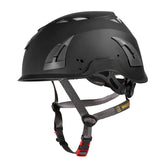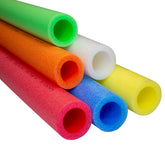We are all good at remembering to put on our helmets, safety boots and gloves on site. It is drilled into us at every corner, but can the same be said for Safety Specs? HSE recommends that you wear eye protection whenever there is a possibility of risk from dust, projectiles, debris, gas, vapours or metal/chemical splashes.
Although all our jobs might vary slightly, there will likely be at least one of those things (dust most likely) that you will face on site. It can be easy to ignore the potential risks such small particles in the air can cause – but don’t be mistaken, even dust floating in the air can cause life-changing injuries.
Airborne debris can impact the cornea while causing itching and blurred vision, with the possibility of a permanent corneal abrasion or eye injury.
EN 166 was introduced as the basic standard for all eye protection and applies to any safety specs/goggles that are not covered already by a specialist standard (such as laser eye protection or sun protection).
All certified safety goggles will have their rating and certification stamped somewhere on the frame. If you can’t find it, then don’t trust them!
Here are some examples of what they might look like on frames:
|
|
|
Understanding EN 166
The rating for each pair of safety glasses will consist of the Optical Class & Strength Rating, followed by a string of numbers depending on the relevancy.
The Optical Class will be shown by the first number and is defined as:
- Class 1: Suitable for distortion-free permanent wear
- Class 2: Ok for occasional wear, not for long jobs
- Class 3: Only suitable for brief wear, for quick temporary jobs.
The Strength Rating will be displayed by a letter, categorised as below:
- S: Has toughened glass but offers minimal impact resistance
- F: The highest level of low energy impact grade offered by glasses
- B: Medium energy impact protection
- A: For protection against high energy impacts, this is reserved for visors & face shields
The numbers that follow these two ratings will apply to their protection against Chemical, Electrical and Thermal Risks. If you require protection from one of these elements, please get in touch with our team to advise you on the best available solutions.
You might also notice a letter at the end, which will apply to the Lens Treatment.
- K: The lens is resistant to damage from small particles, known as Anti-Scratch
- N: The lens is resistant to fogging, known as Anti-Fog.
Hopefully, that has helped explain a little about the regulations behind EN 166 and how important it is to have adequate eye protection. There is a vast arrange of safety specs on the market and it could be hard to know where to start.
To help, here is a list of our top 3 favourite safety glasses. All of them meet the EN 166 standards, with the best Optical Class and the highest grade of low energy impact protection available.























